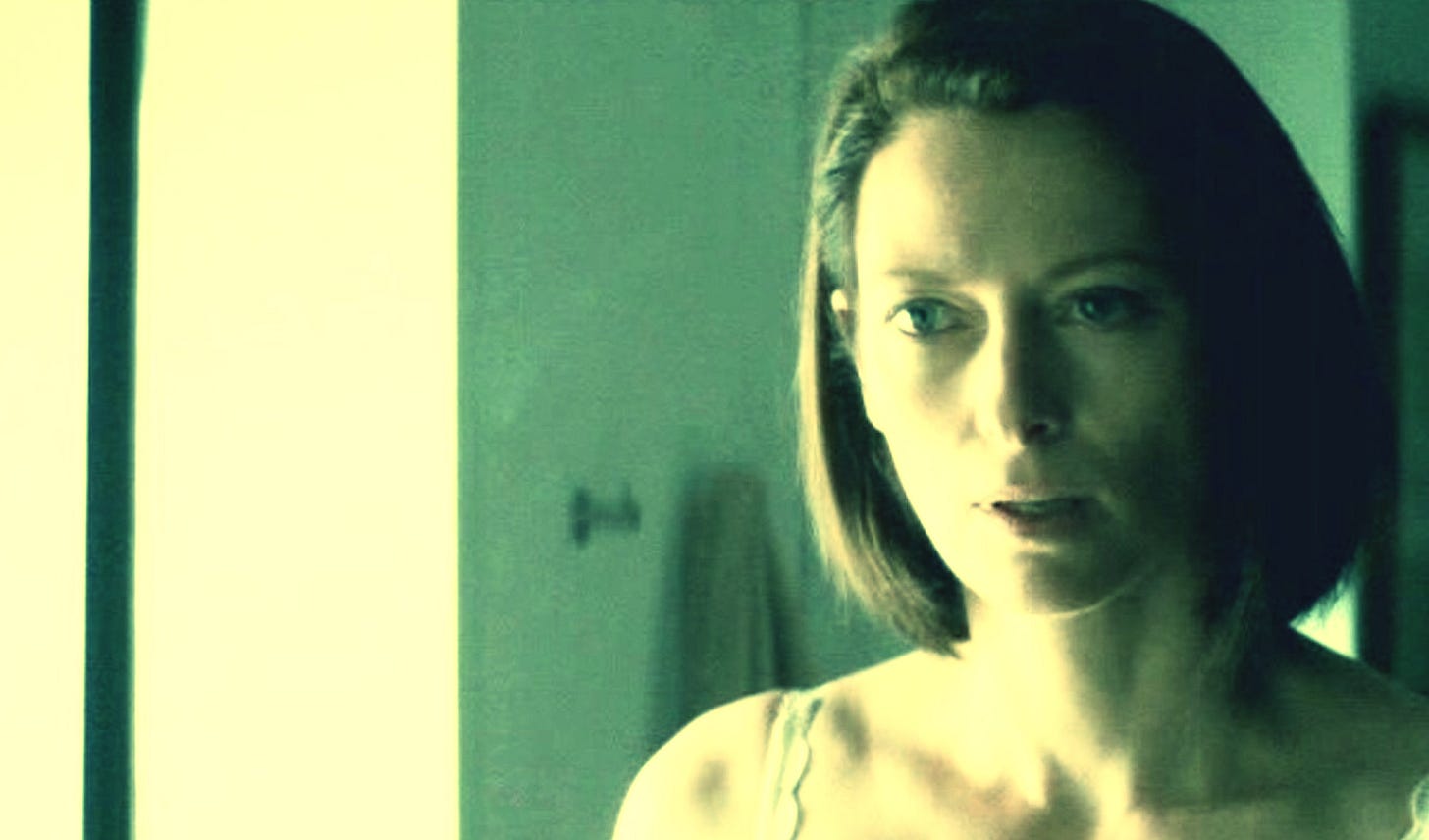She’s no Waingro, no Buffalo Bill, and certainly no Michael Corleone. Villainy of that sort requires a man’s touch.
WHY MEN ARE BETTER VILLAINS BY GRAHAM DASELER 34THPARALLEL MAGAZINE ISSUE 49
One of my own favorite screen scumbags has long been Waingro, the trailer-trash police informant played by Kevin Gage in Heat (1995). Like Buffalo Bill, Waingro has a bad haircut and a penchant for slaying women. His record as an inmate in Pelican Bay State Prison and the swastika tattoo he sports on his sternum suggest that he’s a white supremacist, though within the context of the movie this is more of a garnish to the character than the meat and potatoes of his motivation. He seems, rather, to enjoy hurting people purely for its own sake, like the time, early in the movie, he shoots a security guard simply because the guy’s standing there, dazed and deafened from the blast that blew open his armored car.
I love the quiet, magisterial way he sucks up his chest before beating a hooker to death in a dumpy motel room. He’s really no more than a petty thug, but in that moment you see him as he sees himself. Clearly, he thinks he’s Hannibal Lecter.
I do not mean to belittle the AFI’s rogues gallery too much but merely to offer it as evidence that, when it comes to movie villainy, men have women at a disadvantage. Sure the list is imperfect but, if anything, its imperfections rest on the female side of the scale. Iconic as the Evil Queen in Snow White and the Seven Dwarves may be, she’s no Hannibal Lecter, no Amon Göth, no Waingro. She’s not even a Gordon Gekko (Michael Douglas) or an Auric Goldfinger (Gert Fröbe).
I have a friend (well, to be strictly accurate, a friend of a friend) who finds this whole line of argument rather distasteful. His greatest-of-all-time lists—greatest authors, greatest actors, greatest movie directors—always contains at least as many women as men, often more. Though he would undoubtedly deny any forethought in this gender balance, I suspect he isn’t so much trying to be politically correct as artistically open-minded. Since society so often overlooks talented women, he will be extra careful not to.
The problem with this method of accounting is that, rather than righting an inequity, it instead exacerbates it by pretending the inequity doesn’t exist. Men outnumber women in the realm of movie villainy, at least in part, because men outnumber women in the realm of moviemaking. There are more male directors than female directors, more male screenwriters, more male producers, and, perhaps most important, more A-list male stars. This means that more parts are written for men, and because men’s careers before the camera tend to last longer, male actors have more opportunities, over the course of their lengthy careers, to grab choice roles, including roles as terror-inducing scoundrels. Anthony Hopkins was 53 when he first played Hannibal Lecter, Ben Kingsley 56 when he played Don Logan in Sexy Beast, and John Huston nearly 70 when he played Noah Cross, the water magnate in Chinatown (1974) whose heart is as twisted as the branches of his family tree.
Any inventory of the greatest movie villains—or, for that matter, the greatest movie directors, or movie actors—that contains as many women as men is not being honest. Such lists whitewash the history of Hollywood, pretending that it has been more equitable to women than it has been, like those party-sanctioned histories of the Cultural Revolution that extol the triumphs of Maoism while glossing over the millions of murders. When women do play villains, they tend to come in one of two types, as ogresses or femme fatales. The former category includes among its members The Wicked Witch of the West in The Wizard of Oz (1939), Mrs Danvers in Rebecca (1940), Jane Hudson (Bette Davis) in Whatever Happened to Baby Jane (1962), Nurse Ratched (Louise Fletcher) in One Flew Over the Cuckoo’s Nest (1975), and Annie Wilkes (Kathy Bates) in Misery (1990), all of whom made it onto the AFI’s docket of baddies. In each case, the ogress’s unprepossessing features are paired with an equally unattractive heart. Men and little children are their most frequent victims, though occasionally an innocent young woman like Snow White will become the target of their wrath. When it’s children, homicide is the most common motive, with little further explanation needed.


